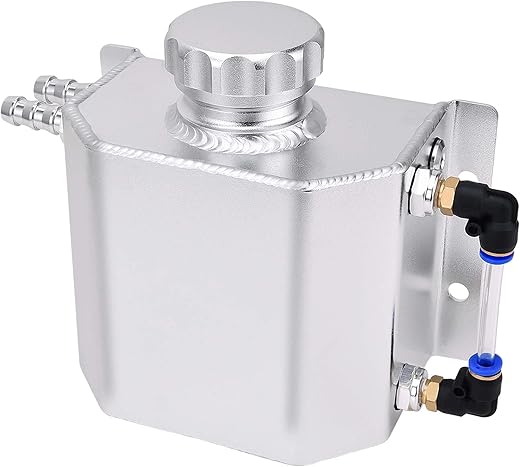









Understanding the Importance of an Overflow Tank
An overflow tank, often overlooked in everyday discussions about vehicle maintenance, serves a crucial role in ensuring the proper functioning of your car’s cooling system. Imagine driving on a hot summer day, your engine purring like a well-oiled machine, but suddenly, it starts to overheat. This is where an overflow tank comes into play—acting as a guardian of your engine’s health.
What is an Overflow Tank?
At its core, an overflow tank is a reservoir that collects excess coolant that flows out of the radiator. As the engine heats up, the coolant expands and some of it escapes into this tank. Think of it as a safety net for your cooling system, preventing coolant loss and maintaining optimal engine temperature.
How Does It Work?
When your engine runs, the coolant circulates through various components, absorbing heat. As it heats up, it expands. If the pressure builds up too much, the excess coolant is pushed into the overflow tank. Once the engine cools down, the coolant is drawn back into the system. This cycle is essential for maintaining a stable operating temperature. Without this component, overheating could lead to catastrophic engine damage.
Signs of a Malfunctioning Overflow Tank
Have you ever wondered if your overflow tank is functioning correctly? Here are some signs to watch for:
1. **Low Coolant Levels**: If you notice that the coolant level in the overflow tank is persistently low, it might indicate a leak or an issue with the tank itself.
2. **Coolant Leaks**: Puddles of coolant under your vehicle can be a sign that the overflow tank or its hoses are damaged.
3. **Overheating Engine**: A malfunctioning overflow tank can lead to overheating, as it fails to regulate coolant levels properly.
Common Misconceptions
Many people believe that an overflow tank is only necessary in high-performance vehicles. However, every vehicle benefits from having one, regardless of its horsepower or size. It’s akin to thinking that only athletes need to stay hydrated; everyone needs water to function effectively!
Maintenance Tips for Your Overflow Tank
It’s essential to keep your overflow tank in top condition. Here are some simple maintenance tips:
1. **Regular Inspections**: Periodically check the overflow tank for cracks or leaks.
2. **Coolant Checks**: Ensure the coolant is at the proper level and is clean. Contaminated coolant can lead to system corrosion.
3. **Hose Condition**: Inspect the hoses connected to your overflow tank for wear and tear. Replacing damaged hoses can prevent future issues.
Choosing the Right Overflow Tank
When it comes to replacing an overflow tank, choosing the right one is crucial. Here are a few factors to consider:
– **Compatibility**: Ensure the tank fits your specific vehicle make and model.
– **Material**: Look for tanks made from durable materials that can withstand high temperatures and pressures.
– **Brand Reputation**: Opt for well-known brands that offer warranties and good customer service.
Conclusion
In summary, an overflow tank is a small but mighty component of your vehicle’s cooling system. By understanding its function and maintaining it properly, you can extend the life of your engine and avoid costly repairs. Just like a well-tended garden needs the right amount of water, your engine requires the proper coolant levels to thrive.
Taking a few minutes to check your overflow tank could save you hours of trouble down the road. So, the next time you pop the hood, give that tank a glance—you’ll be glad you did!
FAQs
1. How do I know if my overflow tank needs to be replaced?
Look for signs of cracks, leaks, or persistent low coolant levels. If you notice any of these, it might be time for a replacement.
2. Can I drive my car if the overflow tank is damaged?
While you can drive with a damaged overflow tank, it is highly discouraged as it can lead to overheating and severe engine damage.
3. How often should I check my overflow tank?
It’s a good practice to check your overflow tank during regular maintenance checks, approximately every 3,000 miles or before long trips.
